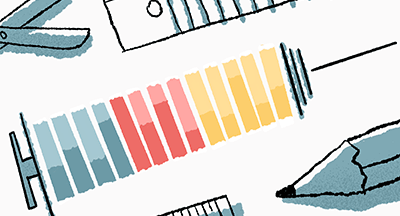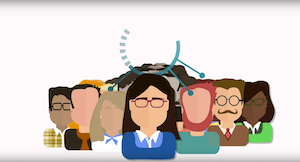The Literal Payoff Academic Stamina Gives Us, According to Research
BY Erin WerraSuperintendents at school districts across the country have an opportunity to shore up students against the societal erosion of respect for academics.
If that sounds like a mouthful, good. It is. Educators are facing a clear and present enemy, and it looks like a disdain for education fed through myriad sources. Here’s how to face the whirlwind, avoid debates, and emerge ready to learn.
Invest in your pre-K population
We know approximately 55 percent of children under five years old spend some time per week being cared for by adults other than their parents (NCES, 2023). Among them, 66 percent were enrolled in some form of center-based program.Pre-kindergarteners, or early childhood learners, are at a pivotal point in brain development, but parents struggle immensely to find suitable, reliable early childhood education and care. At the same time, we also know attending high-quality early childhood education can increase future earnings by up to 25 percent (Bartik, 2014).
Above all though, early childhood education offerings mean your district culture of learning gets a jump start. Students are more likely to graduate and become gainfully employed. Beyond the value to the American workforce, students who have access to early childhood education leave with greater potential for better learning, health, and behavior in their futures.
Grow up gritty
This is not to say that students who attend early childhood education programs are automatically and eternally geared for learning (although wouldn’t that be neat?). Rather, early exposure to play-based, social-emotional opportunities to grow alongside other children begins to wire the neural pathways and behavior structure for students to hit the ground running in kindergarten.Borrowing strategies from early childhood education works to help older students practice coveted “soft skills,” which are hard to teach on the job but possible to practice before graduation. Soft skills and social emotional skills enjoy considerable overlap, and serve to increase students’ capacity for discomfort—and therefore, learning.
Grit is closely related to “hardiness,” defined as “a pattern of skills associated with the capacity to remain resilient in response to stressors” (Maddi et al, 2009). Educators can spur kids to dig in: “Let’s be intellectually aggressive about this.”
Research shows that aiming to increase students’ grit (Dweck, 2008) helps educators:
- Predict whether students will perform well on standardized tests in the future.
- Demonstrate to students the difference between talent and hard work.
- Emphasize the importance of self-regulation.
- Prepare students for a lifetime of setting and pursuing goals.
There has never been a better time for students to build any amount of grit. As the world moves into an increasingly automated, user-centric era, most educators are sounding the alarm about students becoming less self-motivated and more reliant on devices, bulldozer parents, and AI overviews.
Break out of four walls
“Can we have class outside today?” will never cease to spark excitement. Not every day can be a field trip, but thinking outside the same four walls and cemetery rows can certainly breathe new life into the average kid. Edtech has helped shift the classroom from the school building to just about anywhere. Plus, nontraditional approaches to instruction are expanding.For example, students may be energized more by an outdoor-focused, Waldorf-inspired approach.
Students who plan to enter trades after graduation may jump-start their training with apprenticeships or course offerings including agriculture or building cars.
Balanced with traditional academics, students can both achieve grade-level standards and enrich their experience in K12. A tailored and engaging course catalog does wonders for motivation—and potential for increased stamina.
Movement, meditation, and metacognition
If the mental stamina of the average student could match their physical stamina, there’d be no need to solve for decreased academic stamina. Can we harness the power of the elementary schooler for good as well as distraction?A thoughtful, mindful, and masterful use of movement may be an answer, whether mini-recess or a lesson with gross motor elements.
Next, getting students to spend some time alone in their minds is a nigh impossible ask for the Cocomelon generation. But habits may provide a key to success: meditating for 10 minutes per day showed greater benefits than infrequent marathon meditation sessions.
Finally, the crown jewel of academic stamina just may be metacognition. Getting each individual student thinking about their own thinking and learning unlocks a new level of engagement. Not only are students learning new concepts, but they’re learning to refine their own learning. Now we’re cookin’ with gas.
Academic stamina has been eroding for some time, and no singular solution exists (otherwise we’d all be using it). Still, there are strategies and school culture tricks that can get students thinking in the right direction.
Follow-up resource: Soft skills and career success
Here's how five skills can impact a student's future career.WHAT'S NEXT FOR YOUR EDTECH? The right combo of tools & support retains staff and serves students better. We'd love to help. Visit skyward.com/get-started to learn more.

|
Erin Werra Blogger, Researcher, and Edvocate |
Erin Werra is a content writer and strategist at Skyward’s Advancing K12 blog. Her writing about K12 edtech, data, security, social-emotional learning, and leadership has appeared in THE Journal, District Administration, eSchool News, and more. She enjoys puzzling over details to make K12 edtech info accessible for all. Outside of edtech, she’s waxing poetic about motherhood, personality traits, and self-growth.




